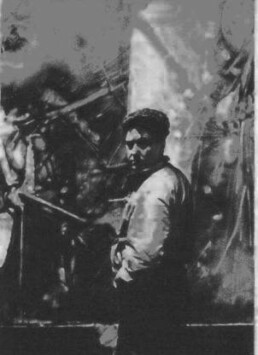Roberto Matta
1911 (Santiago (Chile)) - 2002 (Civitavechhia (Italy))
No work available for the moment.
Biography
Born in Chile in 1911, Roberto Matta Echaurren studied architecture until he moved to Paris in 1933 where he worked in Le Corbusier’s studio. He traveled throughout Europe and frequented many artists (Garcia Lorca, Henry Moore, René Magritte, Alvar Alto…). Back in France in 1937, Salvador Dali wanted to introduce him to André Breton who immediately qualified him as Surrealist even though Matta did not know what this term meant! At that time, he experimented with new techniques including that of the rag which will remain one of the bases of his work: he spreads the color on the canvas using a fabric and the stains then formed will serve as a basis for the outline of the brush. His favorite themes are those of the surrealists: the unconscious, automatism, poetic exigency, eroticism, revolutionary commitment and the quest for a new future for man. He is easily expressed in very large formats where his political commitment can take on its full dimension.
In 1939, he left for New York in order to flee the war and find his surrealist friends who had settled there: Tanguy, Duchamp, Breton… He also made friends with the American artists Gorky, Motherwell and Pollock on whom he would have a definite influence. .
In 1948, he was excluded from the group of surrealists following a love affair he would have had with Gorky’s wife and which will be the cause of the latter’s suicide, which pushes him to return for a time to Chile. Then, he returns to Europe and divides his time between the bustle of the French capital and the calm and authenticity of Italy. It was in Albisola in the early 1950s that he worked the land for the first time to make ceramics. This material will never leave him and he will regularly use it directly on burlap where the anthropomorphism of his half-figurative, half-abstract character appears in its most primitive form.






